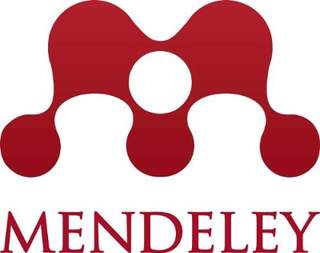THE UTILISATION OF ENVIRONMENTAL SERVICE AT BUNTOI VILLAGE FOREST, KAHAYAN HILIR DISTRICT, PULANG PISAU REGENCY, CENTRAL KALIMANTAN PROVINCE
Abstract
Village forest is a managed state forest by village institution for the prosperity of villagers. Village that has granted village forest is responsible for its utilization and its sustainability. The development of village forest in Buntoi Village is still at the preliminary stage; therefore the identification of environmental services, policy, institutional arrangements, and sustainable potential livelihood need to be conducted. The purpose of this study is to identify and analyse the potential of ecosystem services and influencing factors in the utilization of the ecosystem services. The result showed that there was lack of water services in the Buntoi village since there was no spring water in the forest. Also did not have the beauty of potential landscape that can attract tourists. Moreover, the potential of biodiversity and carbon sequestration in the village had not been optimised. Low utilization of ecosystem services in Buntoi was due to: (1) perceptions of stakeholders that had not yet support the utilization of ecosystem services; and (2) lack of support from district and provincial in the utilization of ecosystem services in village forest. Activities that can be developed to utilize biodiversity, beauty of landscape, and carbon conservation in Buntoi are ecotourism and REDD+ scheme.
Keywords
Full Text:
PDFReferences
Blaustein, R., Ettlinger, R.B., Boucher, D., Macey, K., Ryan, F., & Schwartzman, S. (2007). Reducing emissions from deforestation and
forest degradation (REDD). Washington, DC:Climate Action Network
Ekawati, S., Ginoga, K.L., & Lugina, M. (2013). Kondisi tata kelola hutan untuk implementasi pengurangan emisi dari deforestasi dan degradasi hutan (REDD+) di Indonesia. Jurnal Analisis Kebijakan Kehutanan, 10(1),
-87.
Ginoga, K.L., Sumedi, N., Djaenudin, D., Nurfatriani,F., Indartik, & Lugina, M. (2011). Analisis keuntungan dan kendala mekanismepembayaran jasa lingkungan untukmendukung keberhasilan implementasi mekanisme REDD+. Bogor: Pusat Penelitian dan Pengembangan Perubahan Iklim dan
Kebijakan.
Jaenicke, J., Englhart, S., & Siegert, F. (2011). Monitoring the effect of restoration measures in Indonesian peatlands by radar satellite imagery. Journal of Environmental Management, 92(3), 630-638. doi: http:// dx.doi.org/10.1016/j.jenvman.2010.09.029
Kalimantan Forests and Climate Partnership. (2014).Peta rencana pola tata guna lahan Desa Katimpun. Kapuas: Kapuas Australia Forest Carbon Partnership (IAFCP) melalui Program Kalimantan Forests and Climate Partnership (KFCP) bekerja sama dengan Pemerintah Kabupaten Kapuas dan Desa Katimpun.
Peraturan Menteri Kehutanan Nomor P.89/MENHUTII/2014 Tentang Hutan Desa.
Mayrand, K. & Paquin, M. (2004). Payments for environmental services: A survey and assessment of current schemes (pp. 53).Montreal: Unisfera.
Muttaqin, M.Z. (2012). Designing payments for environmental services (PES) to reduce emissions from deforestation and forest degradation (REDD+) in Indonesia. (PhD Thesis). Canberra: The Australian National
University.
Olbrei, Erik. (2013, 25 September). Indonesia sets a carbon time-bomb. Retrieved 1 October, 2013, from http://theconversation.com/indonesia-sets-a-carbon-time-bomb-17216
Page, S.E., Rieley, J.O. & Banks, C.J. (2011). Global and regional importance of the tropical peatland carbon pool. Global Change
Biology, 17(2), 798-818. doi: 10.1111/j.1365-2486.2010.02279.x
Pagiola, S., Landell-Mills, N., & Bishop, J. (2002).Market-based mechanisms for forest conservation and development. In S. Pagiola, J. Bishop & N. Landell-Mills (Eds.), Selling forest for environmental services: Marketbased
mechanism for conservation and development (pp. 1-13). London: Earthscan.
PNPM Mandiri. (2009) What Is PNPM Mandiri? PNPM Mandiri Newsletter (II ed.). Jakarta: PNPM Mandiri Communication Team.
Instruksi Presiden Nomor 3 Tahun 2008 tentangPelaksanaan Program Bantuan Langsung Tunai untuk Rumah Tangga Sasaran, No. 3 Tahun 2008 C.F.R.
The International Rubber Research & Development Board. (2012). Risks & opportunities for the natural rubber industry within a low carbon economy. Presentasi pada International Workshop on Carbon Markets 2012, Bogor,
-4 Desember 2012.
Yayasan Cakrawala Indonesia. (2013). Assessmentreport for socio-economic, climate change and environmental services forest at Buntoi
Village, Central Kalimantan. Palangkaraya:Yayasan Cakrawala Indonesia.
DOI: https://doi.org/10.20886/jakk.2017.14.1.1-16
Copyright (c) 2017 Jurnal Analisis Kebijakan Kehutanan

This work is licensed under a Creative Commons Attribution-NonCommercial-ShareAlike 4.0 International License.



